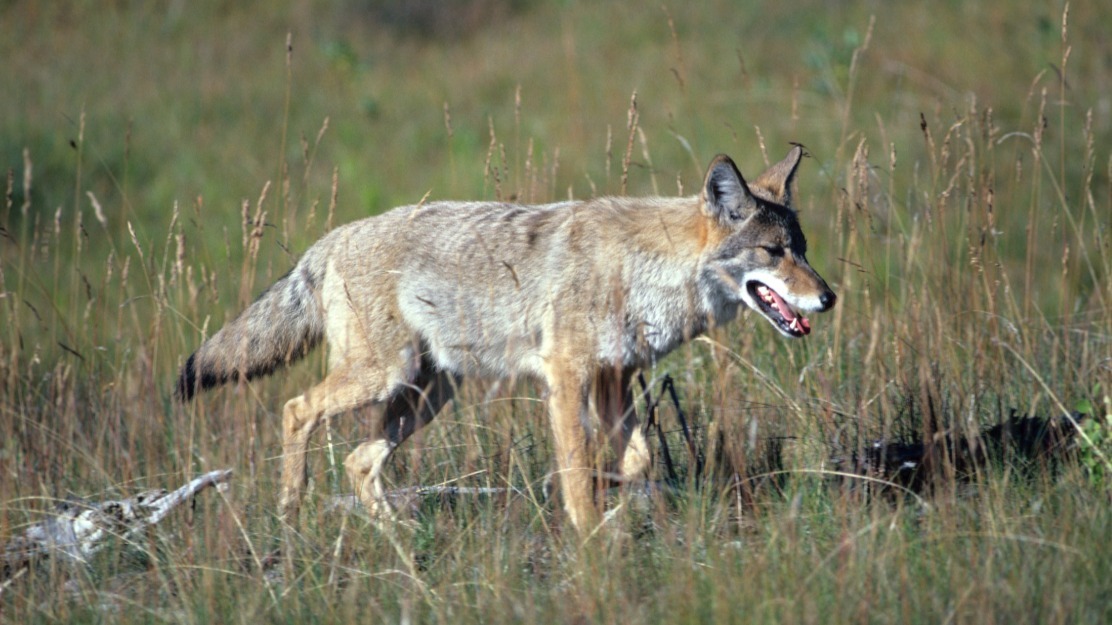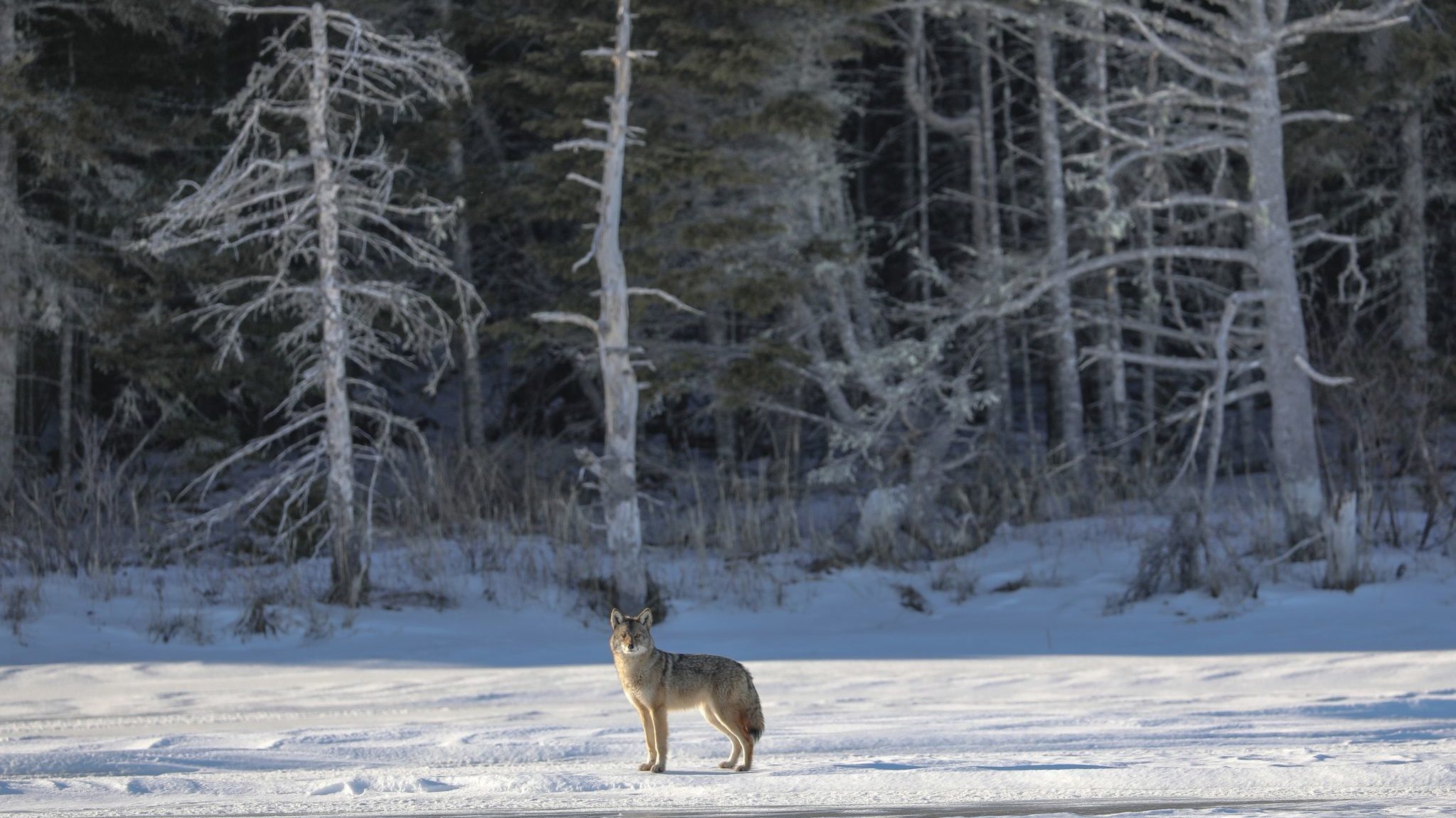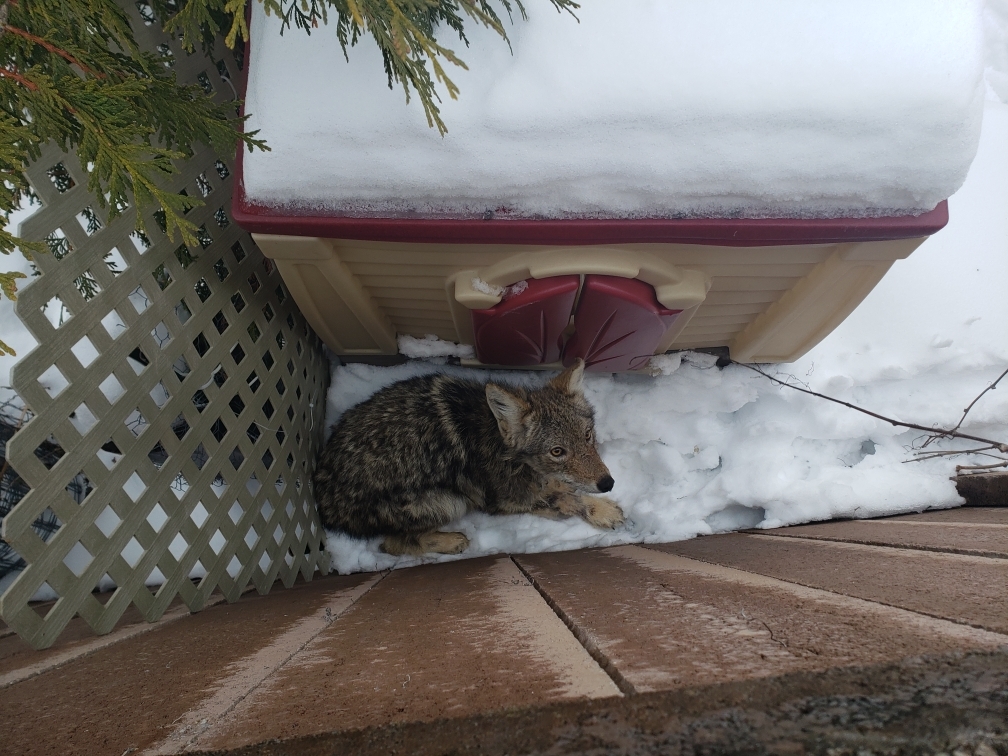
Coyotes are an integral part of our ecosystem in the National Capital Region. They live in all areas, from urban Ottawa and Gatineau to suburban and rural areas. While coyotes usually avoid humans, it is not uncommon to see them out during the day. This is especially true in the early mornings and evenings, and in winter.
Coyotes pose very little risk to people. Statistically, you are 10 times as likely to be injured by lightning as by a coyote — and 500,000 times as likely by a dog.
So, the risk with coyotes is very low and there are a few things you can do to reduce the risk even further.
Tips to prevent encounters
Never feed coyotes, even unintentionally
Never feed wild animals. Nature provides them with all they need. Feeding coyotes causes them to lose their natural fear of humans and increases the chance of conflict.
Here are some ways to avoid inadvertently feeding coyotes:
- Always take your garbage with you until you find a place to dispose of it properly.
- At home, make sure your garbage and compost bins are secure, so coyotes and other wild animals can't get in.
- If you have a fruit tree or bushes in your backyard, pick ripe fruit and clean up fallen fruit from the ground.
Keep your dog on a leash at all times
Keep your dog on a leash except in designated off-leash areas. Coyotes may see small dogs as prey. They may see larger dogs as threats. Coyotes will be more protective of their dens during mating and pupping seasons, which extend from winter to early summer.
What to do in case of an encounter

Coyotes almost always see humans as a threat and do their best to avoid human interactions. That said, they are very curious creatures. If you come across a coyote, it is very likely that it will stop and look at you before retreating.
If you see a coyote from a good distance…
Leave the area calmly, without running or turning your back to the animal.
If you see an aggressive coyote…
An aggressive coyote is one that continues to approach you after noticing you, coming within a few metres, or that is not deterred by shouting. In the very rare event that you meet an aggressive coyote, you must show you are not prey.
If a coyote approaches you:
- Stand tall, wave your arms and shout at it
- Do not make direct eye contact, which can be perceived as a threat
- Pick up small children (or small pets) to make them appear less vulnerable
- Do not turn your back or run — just like dogs, coyotes may chase you if you run
- Back away slowly while continuing to shout and wave
- Report the incident to the police by calling 9-1-1
Source: City of Ottawa

If you see a sick or injured coyote…
If you see a coyote or any wild animal limping, suffering from fur loss or foaming at the mouth, report your observation to the appropriate entity.
How the NCC and the City of Ottawa deal with coyotes
When it comes to coyotes, the NCC and the City of Ottawa have a common strategy: leave them alone.
You may have heard stories of bears, moose and deer being moved from downtown or the suburbs to more suitable natural areas. In these cases, we intervene because the animals need help getting out of a place they can’t escape safely on their own. However, coyotes are very adaptable and do not need our help to get away from humans.
We don’t remove coyotes from places where they may encounter people — it wouldn’t be an effective strategy. Coyotes are found everywhere in the region, with their territories fitting together like a jigsaw puzzle, even in urban areas. If we remove a coyote from an area, then another coyote will almost immediately move into the vacant habitat to replace it.

We don’t intervene unless necessary — that is, if a coyote is aggressive, injured or sick.
Here are a few things the NCC does to prevent conflicts with wildlife:
- Record observations
- Install wildlife-proof garbage cans
- Post signage at key trail heads
- Clean up brush and vegetation along key trails twice a season
- Enforce NCC animal regulations on trails
- Meet with community associations
- Launch social media awareness campaigns
The best strategy in dealing with coyotes is learning how to coexist with them. In other words, prevention and awareness are key to living in harmony with our misunderstood wild neighbour!
This blog was written in collaboration with:
- Nick Stow, Senior Planner, City of Ottawa
- Jason Pink, Conservation Officer, NCC
- Christine Hartig, Program Manager, Operations Support and Regulatory Services, City of Ottawa
Other resources